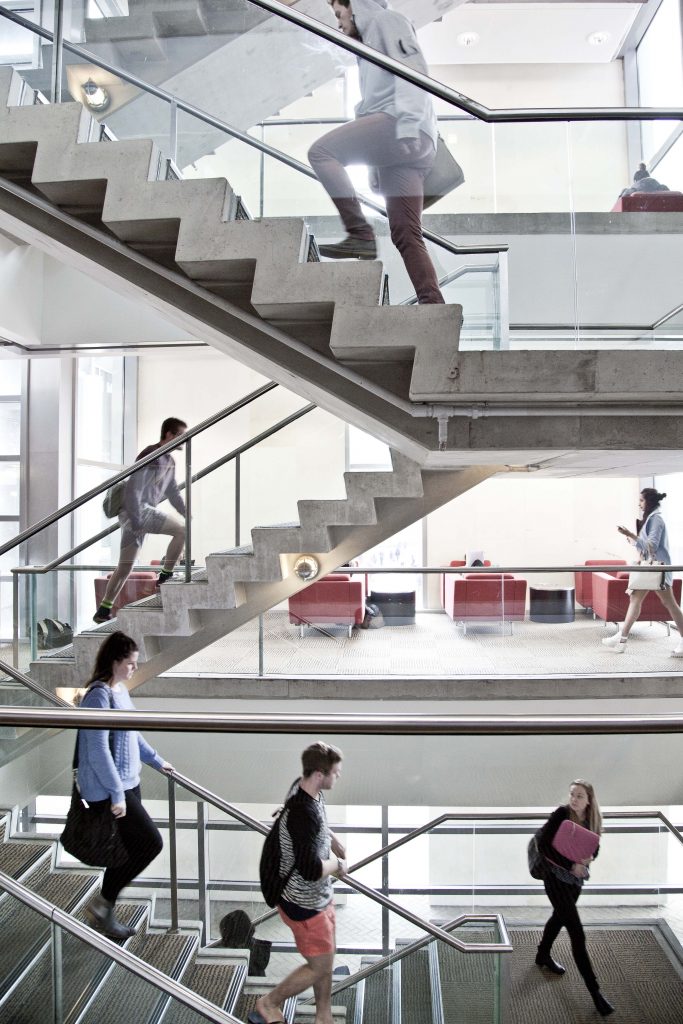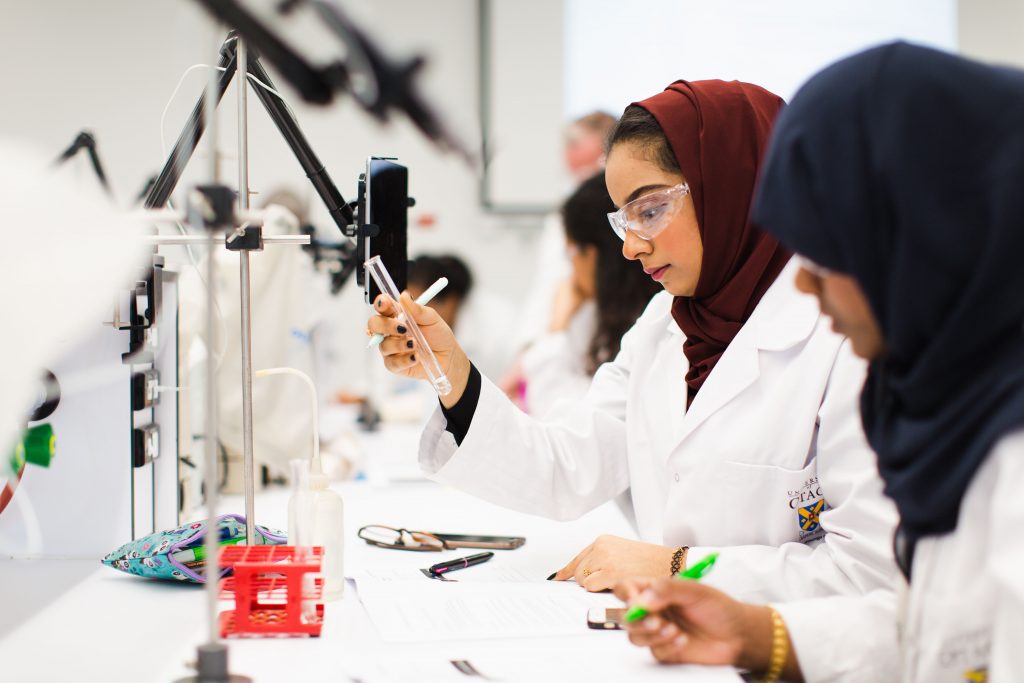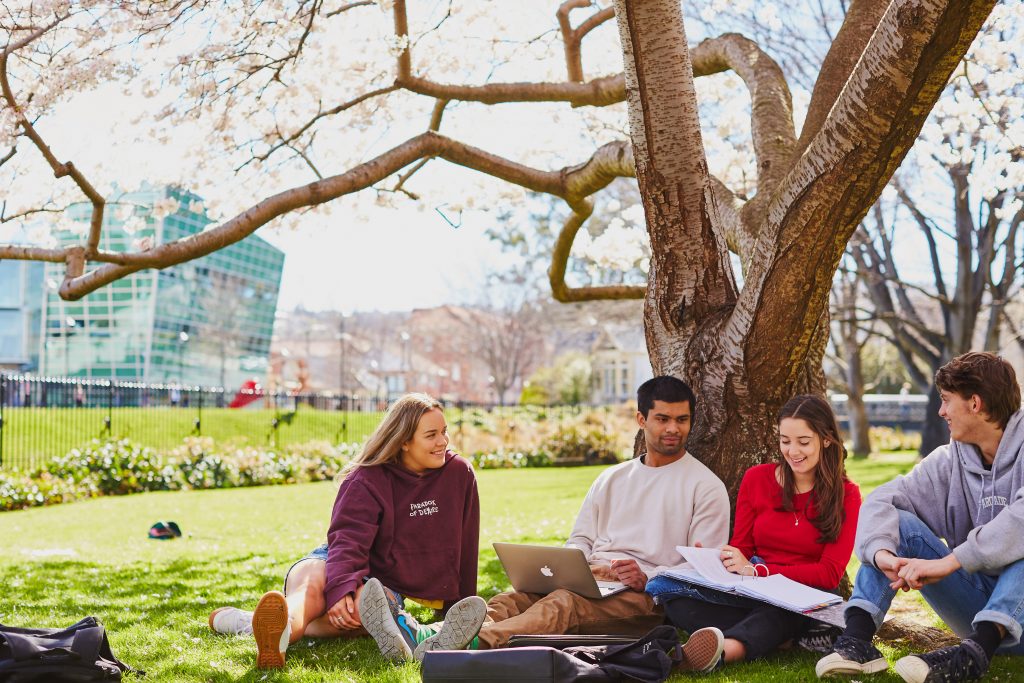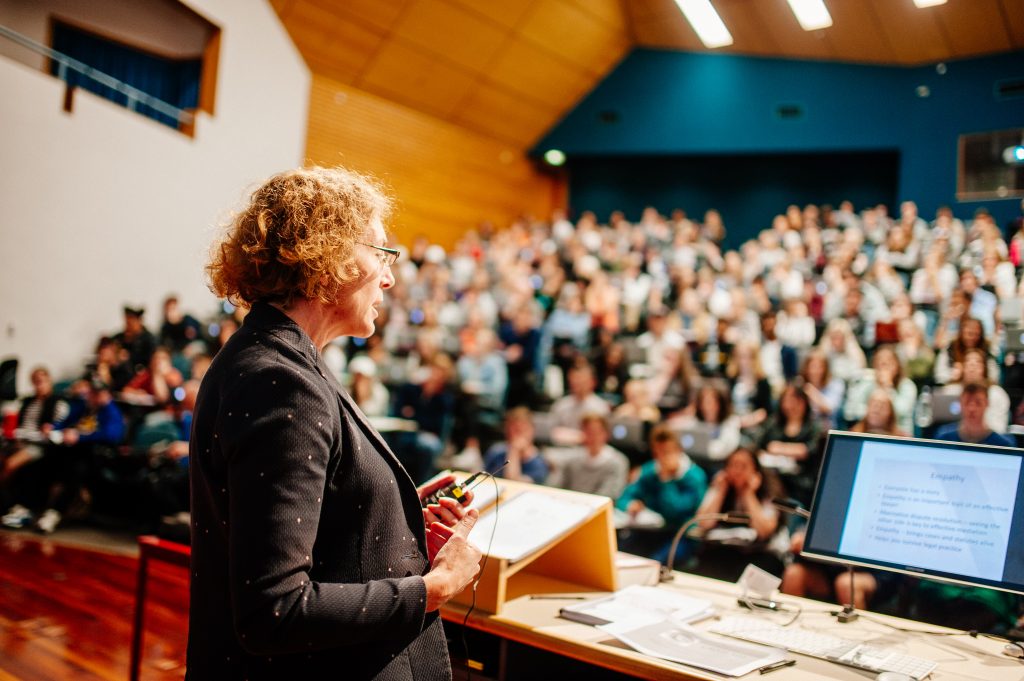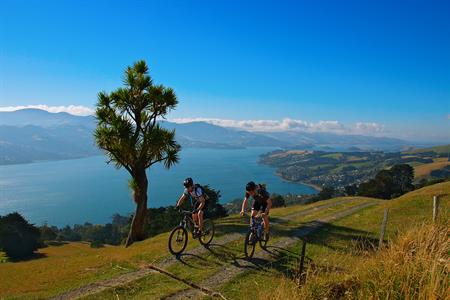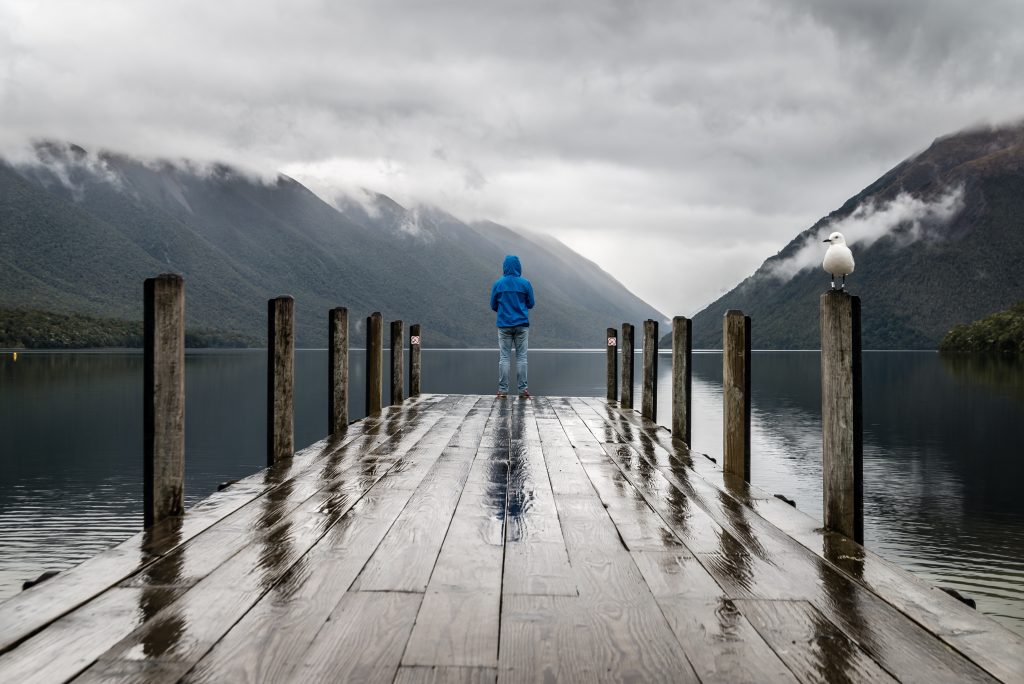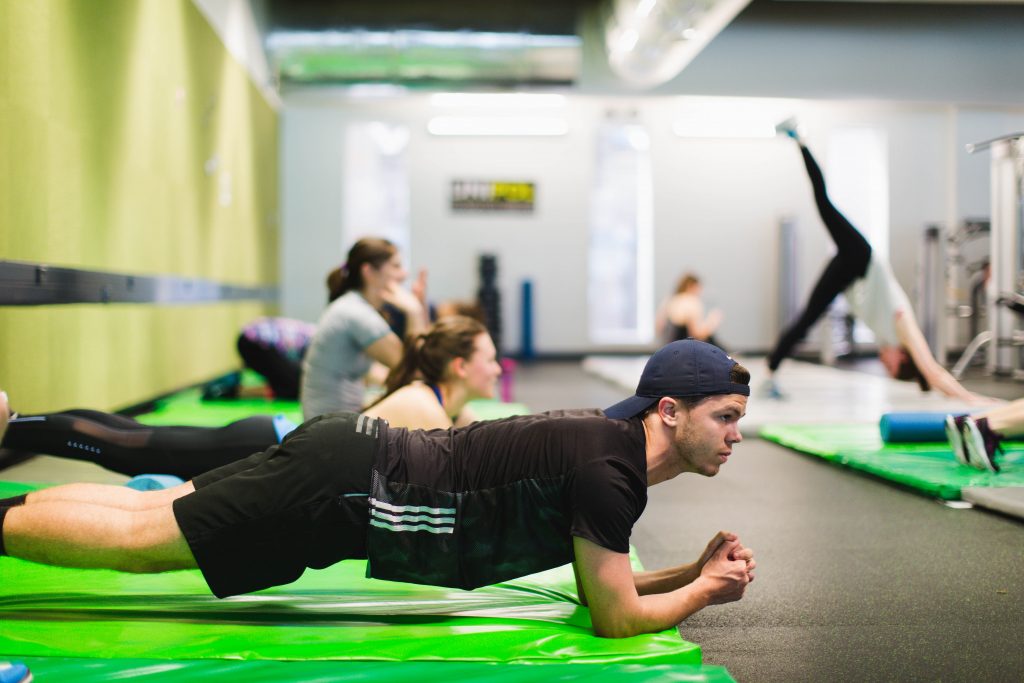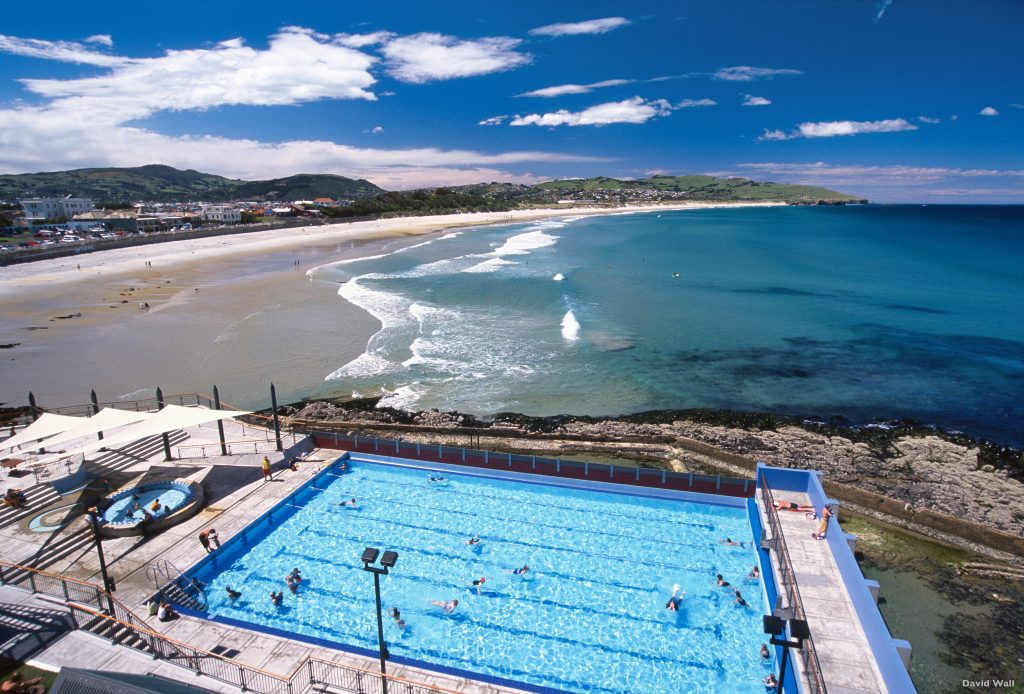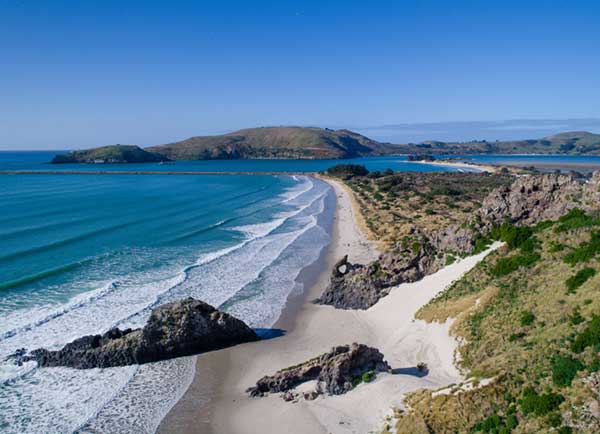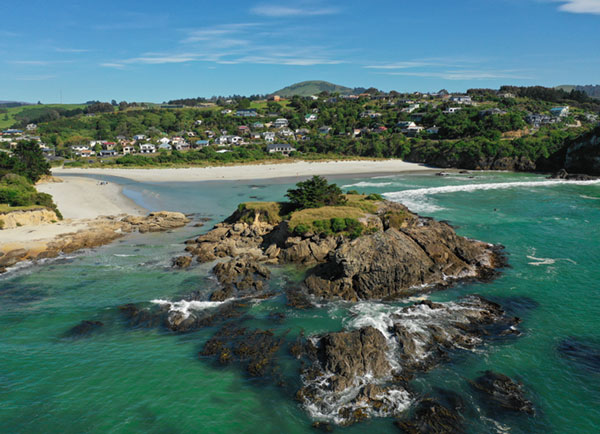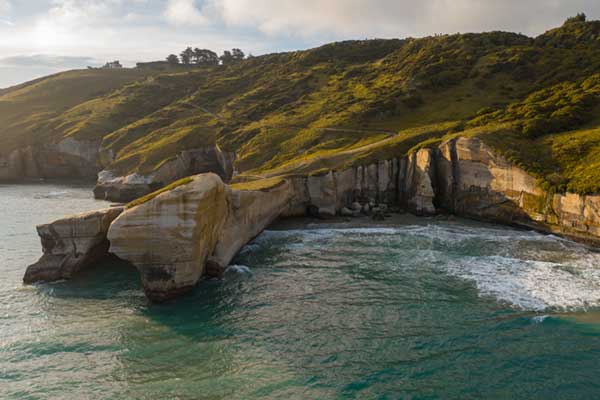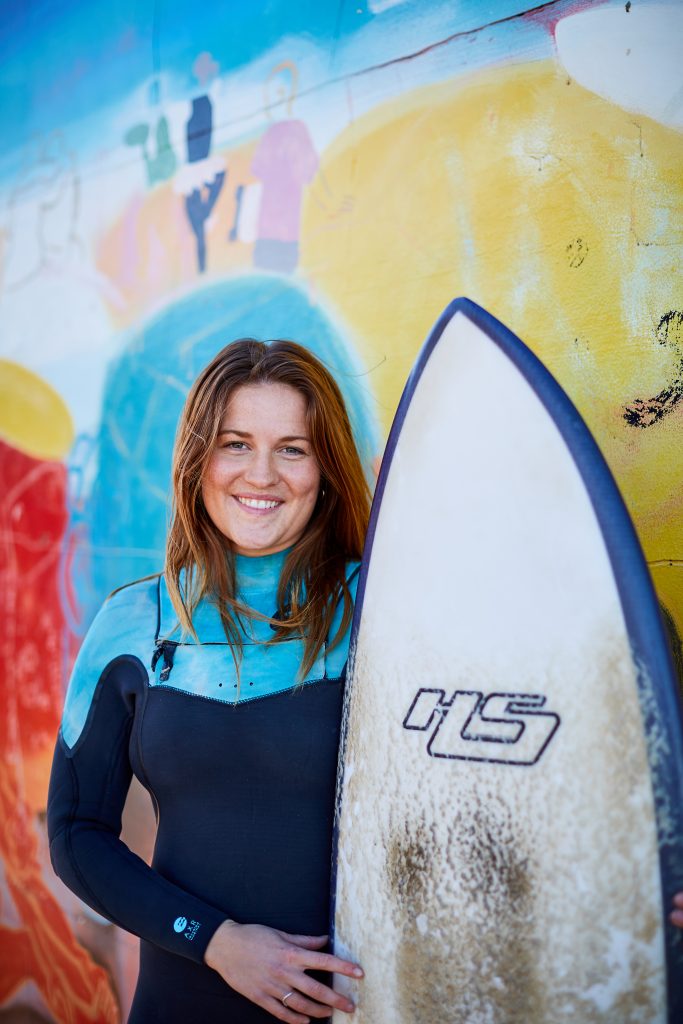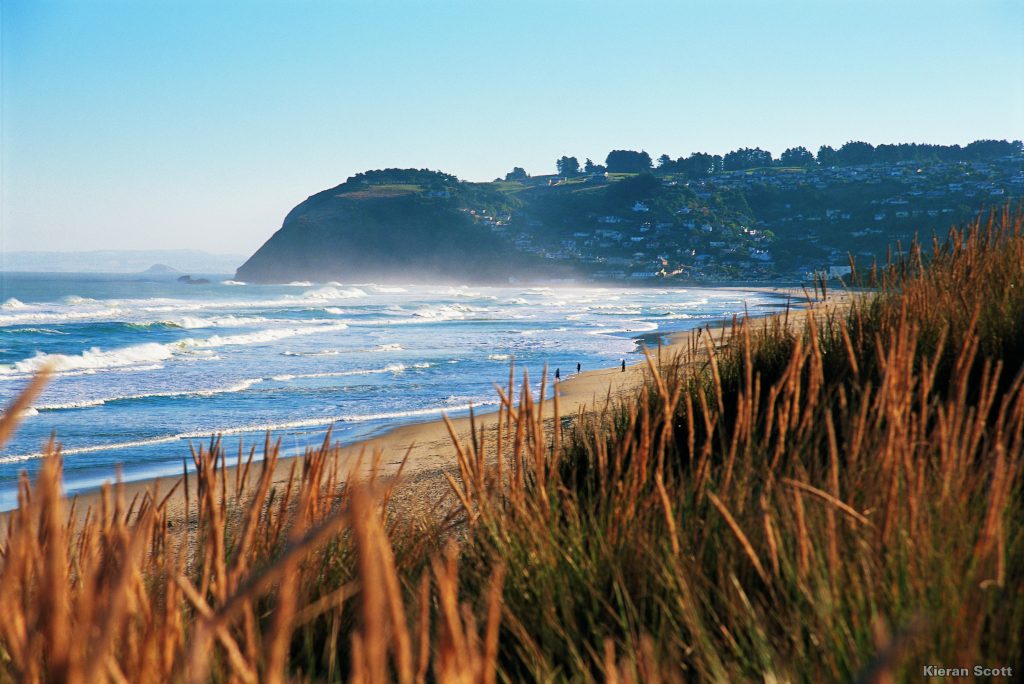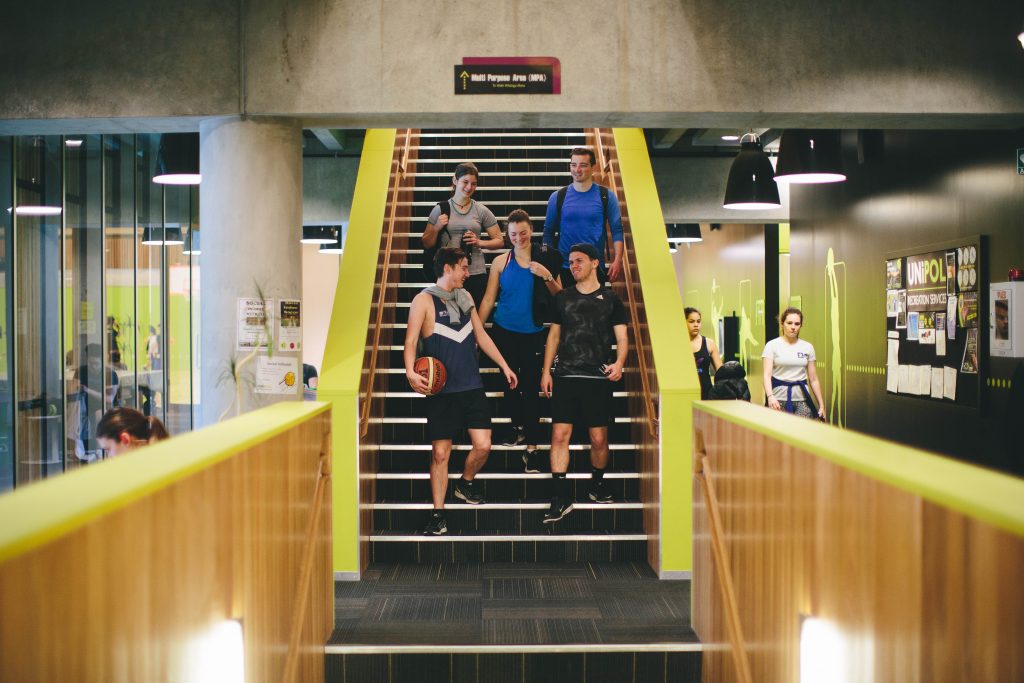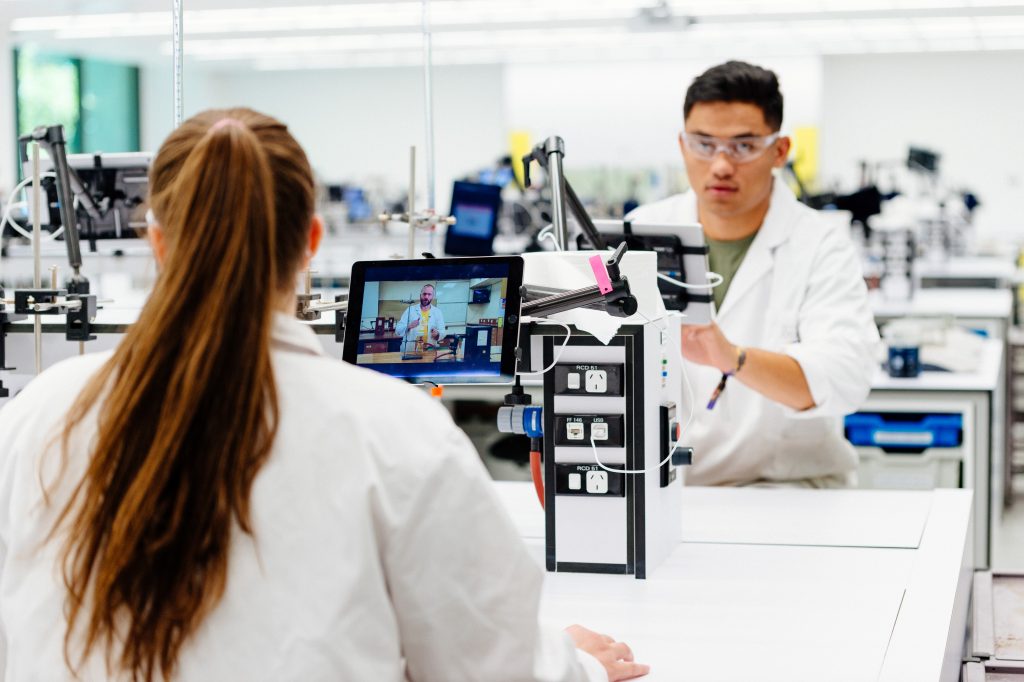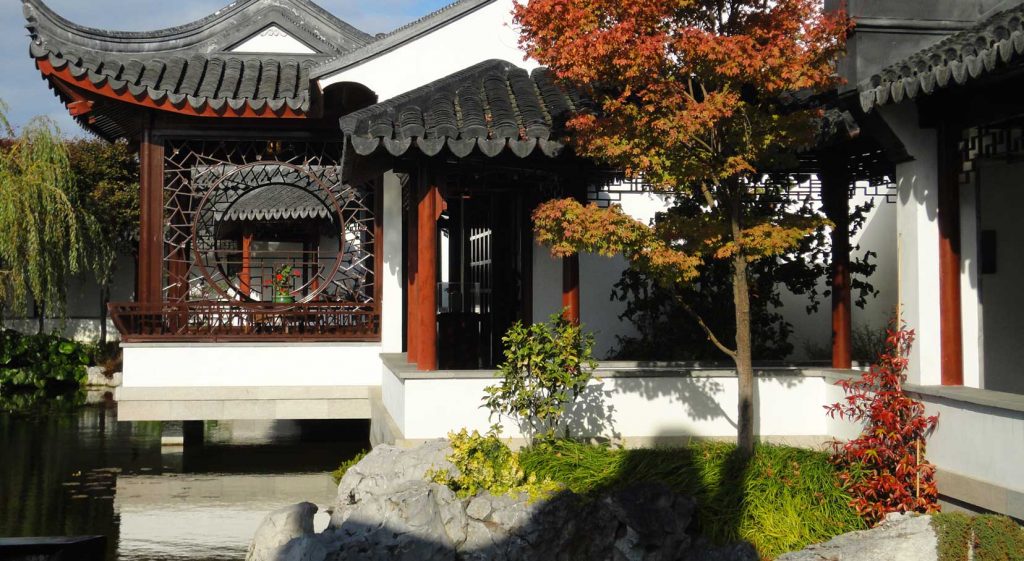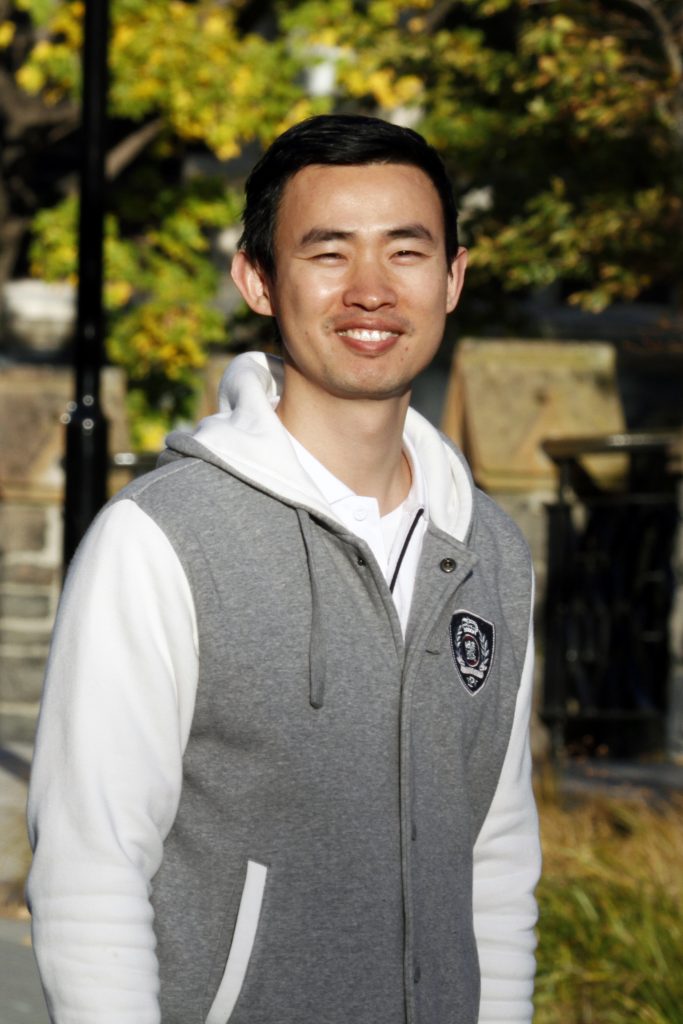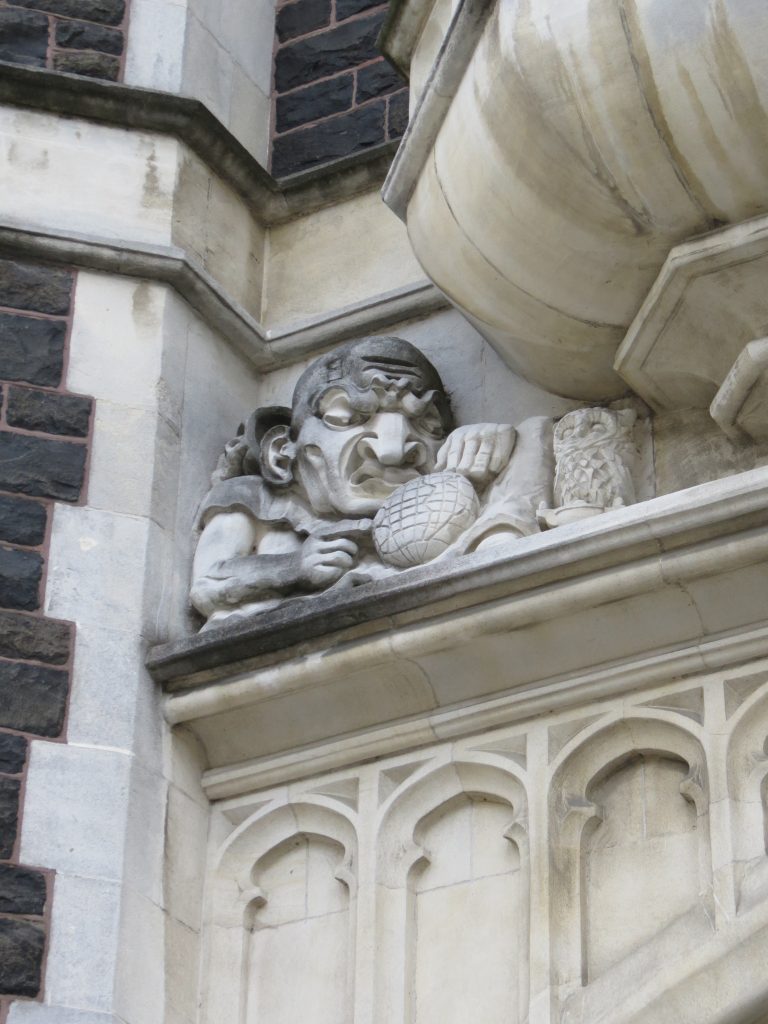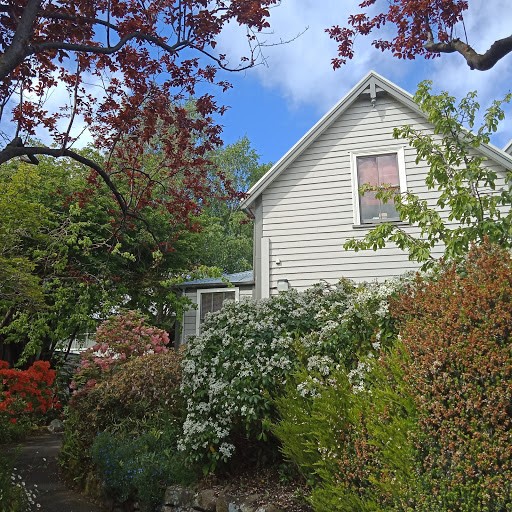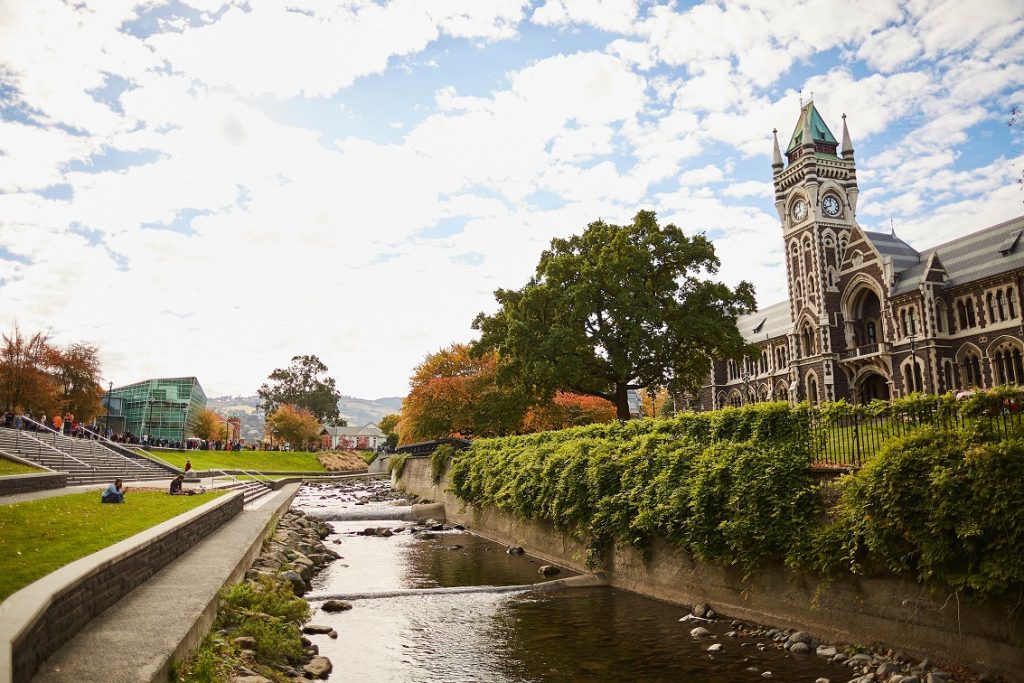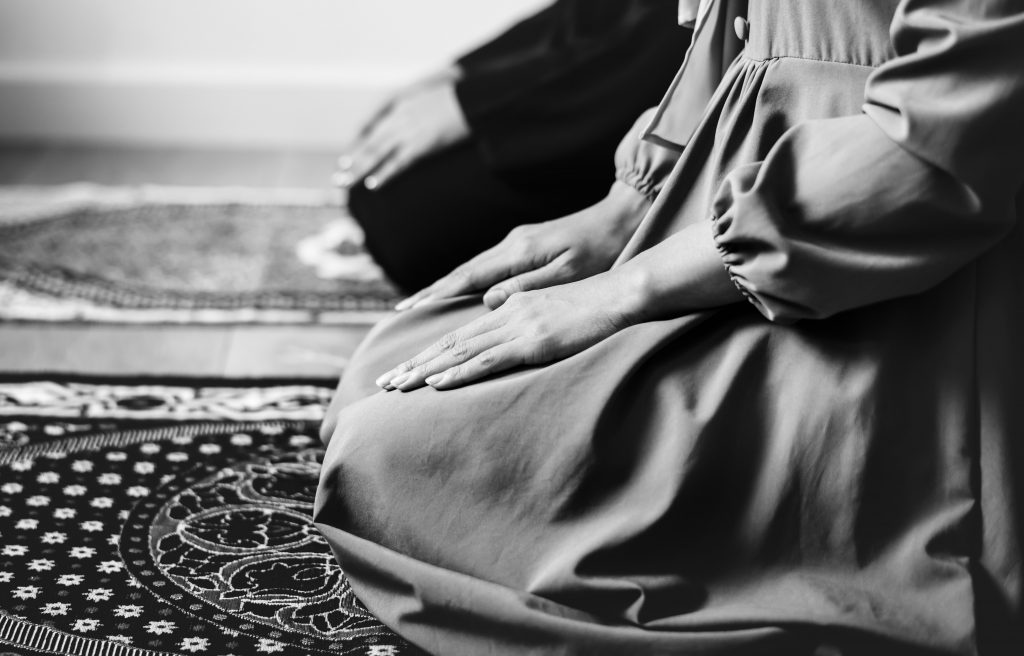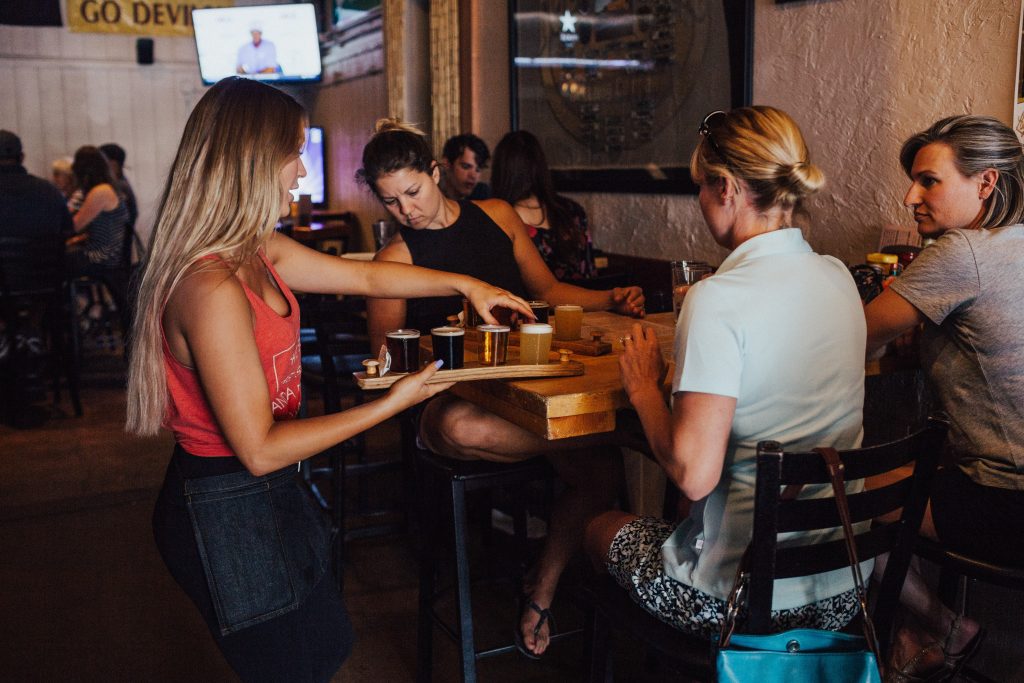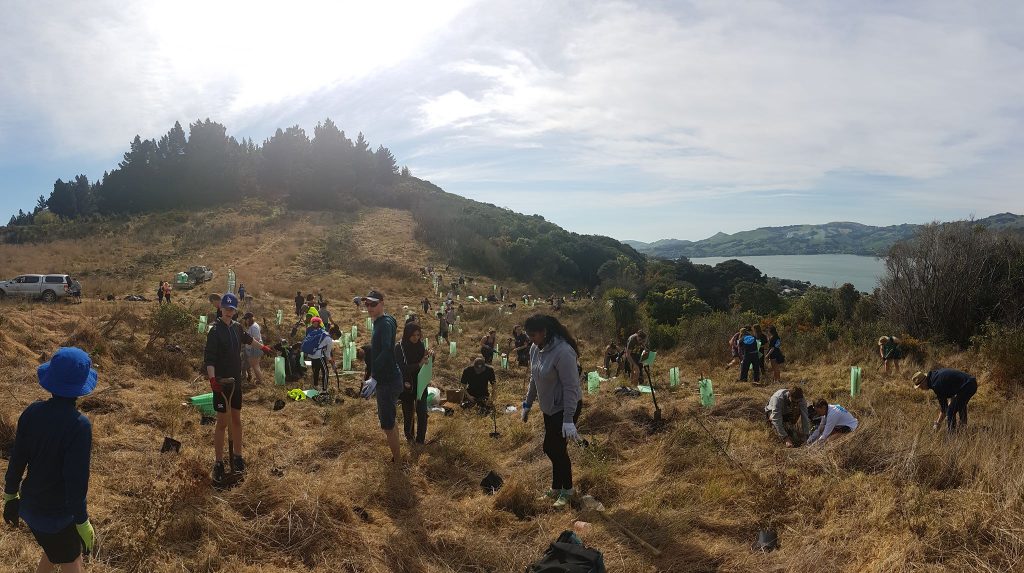Just because we can, does it mean we should?
In today’s world, more than ever before we require people who are trained in an interdisciplinary nature so that they can ask the hard questions like the title of this blog; “just because we can, does it mean we should?” This kind of dilemma is one that people will increasingly face as science and technology continually allow us to achieve what was once deemed impossible. The University of Otago has taken this into consideration and developed an interdisciplinary degree called the Bachelor of Arts and Science (BASc) and we’re going to take a closer look at it in today’s blog post.
Humanities or Science?
Traditionally universities around the world have encouraged students to specialise in either science or the humanities. There just hasn’t been an option of being able to do both and quite frankly it is extremely limiting to those students who can do both. Thankfully, Otago has always been very flexible when it comes to degree structure and students have long been able to include some humanities papers in their science degrees, and science papers in their arts degree. They have also been able to do a double degree which would usually take five years, but now students at Otago have another option that mixes both disciplines with the BASc – it allows you to have a science or an applied science major and an arts major but it only takes four years.
Subject options
We have a reputation here at Otago of being very flexible when it comes to course choices and degree structure and if you’re looking for a degree that offers a multitude of subject options then the BASc is definitely the one for you – there are about 1500 possible combinations of major subjects available so you really don’t just have to fit into one box with this degree!
Well rounded individuals
One of the reasons the University of Otago has developed this degree is to give employers more of what they want – well rounded individuals who are not only educated in their chosen field, but as mentioned in the introductory paragraph individuals who can see the world from different views or paradigms. Artificial intelligence, genetic manipulation, areas of study that are become increasingly advanced and potentially useful, but areas that are not without risk. The world needs people that can understand the science of an issue but who are also aware of our very human nature and what we have learnt from our past experiences and mistakes.
Follow your passions
Whilst some degrees and programmes will ultimately place you directly into a job in a chosen field sometimes the best way to find your chosen career path is to follow your passions. The BASc will allow you to do this, and as Associate Professor Lisa Ellis, Philosophy Lecturer and Bachelor of Arts and Science Adviser states: “You are better prepared if you follow your passions and develop yourself intellectually…..you are much more attractive to an employer.”
Nicky Richardson is an International Marketing Coordinator at the University of Otago. With degrees in music and marketing, she is a recent graduate of Otago herself – she loves Otago so much she ended up getting a job here!
Where can an Otago degree take you?
One thing that never ceases to amaze me in my job is the sense of loyalty and pride that the University of Otago imparts on alumni. International students who have studied at Otago and have integrated into the culture and immersed themselves in all the opportunities have an incredible passion for this university at the bottom of the world. A passion that continues long after they have left us.
An email sent to our department was forwarded my way last week from a student who graduated with a BSc (Bachelor of Science) in Chemistry in 2012. From my first glance it was clear that this student wanted to share her story, so I got in touch with Nicole Bravo Castro (nee Wurster) to find out what she had to say about her experiences at Otago.
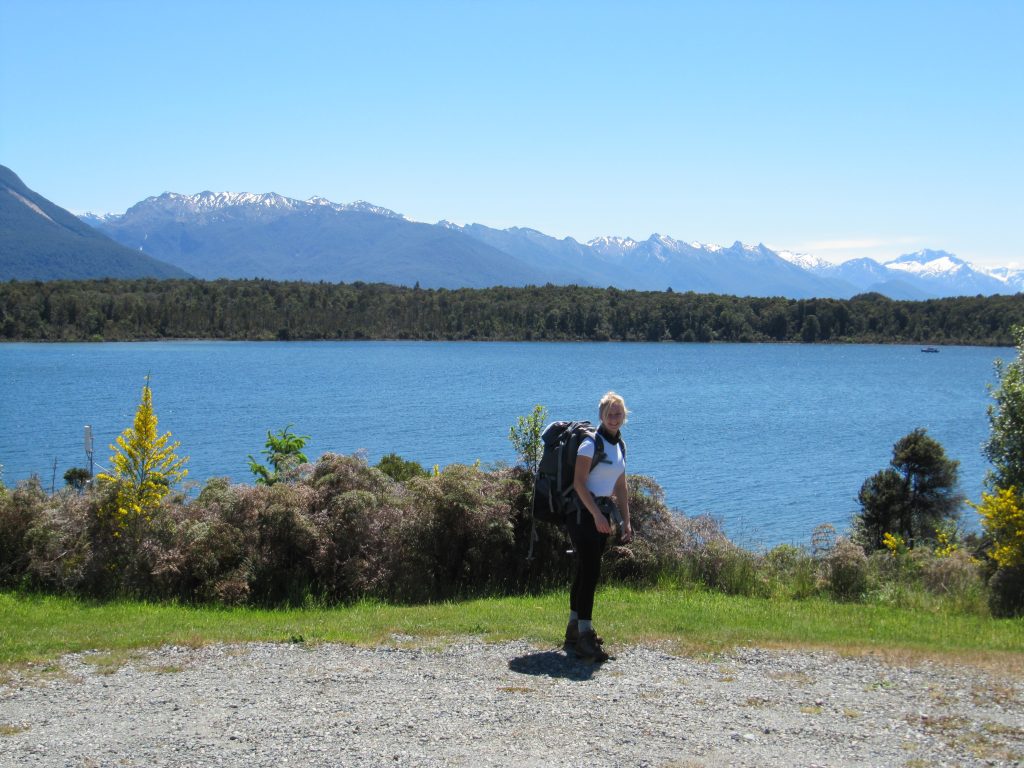
Nicole exploring the spectacular South Island during her time spent here studying for her undergraduate degree.
Plans change
Nicole Wurster (pictured above) had travelled to NZ from her home in Germany as a high school exchange student. She never had any intention of staying beyond that time, but plans do change….
“I felt inspired by everyone applying for university and was immediately drawn to the University of Otago – having been to Dunedin previously on a summer vacation I guess I had already fallen in love with New Zealand’s southern beauty. Back then, I remember strolling around campus and dreaming about studying at Otago. I decided to stay for the duration of my entire undergraduate degree.”
Why Otago?
Like many other international students who choose to study here our worldwide reputation and cutting edge research is attractive. Also, another point that is often mentioned is the welcoming and warm nature of our staff and students, and Dunedin as a whole, Nicole felt immediately at home. But another reason is the flexibility of our programmes – Otago aims to turn out well rounded graduates who have a broader subject knowledge and skill set than their chosen degree may imply:
“Choosing courses at Otago is quite flexible, I could individually select and combine my courses to plan my degree step by step. I absolutely loved this option as it helped me throughout my studies to develop my strengths – the system allowed me to take a couple of non-scientific subjects in order to give me a broader general knowledge.”
How did you find the learning/teaching environment at Otago?
“I loved it and haven’t come across the same dynamics in any other tertiary educational institution I know. Otago’s chemistry department put a great focus on teamwork and offered countless opportunities to develop interpersonal skills. Otago is very modern in both its facilities and its spirit and I developed some core writing skills which I value up to this day. Lecturers were friendly and felt very authentic, which made every trip to university enjoyable – even the early morning lectures! The feeling of not being just one of many, but someone individual with something valuable to offer is something I have frequently missed in European universities.”
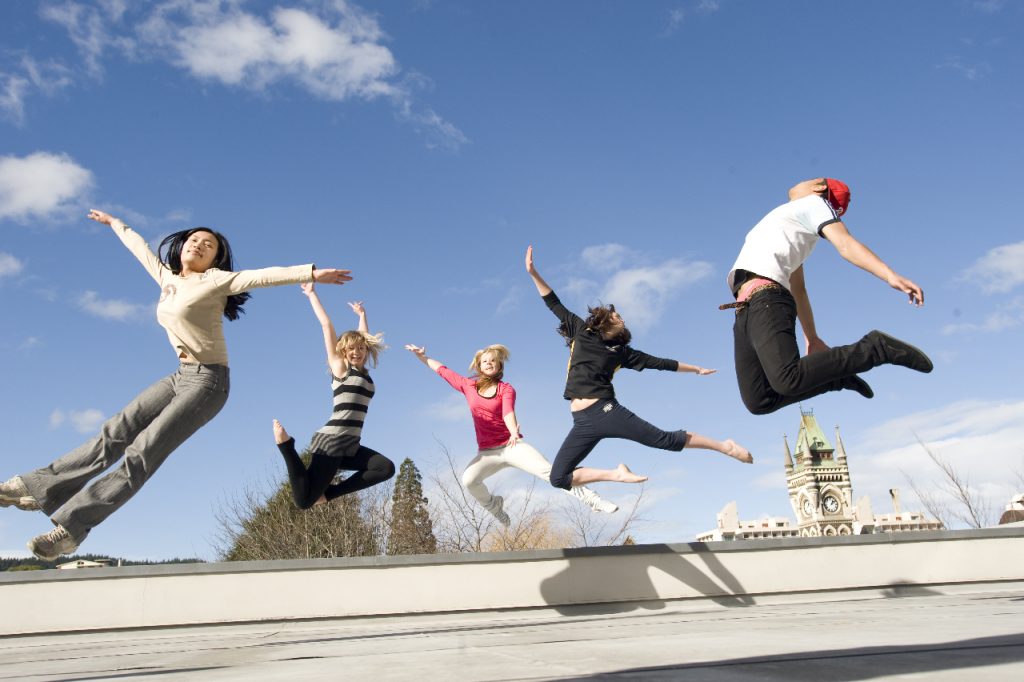
Nicole (second from left) and friends with the iconic University of Otago clocktower in the background.
What about the student life/culture?
As we have mentioned before the saying ‘one size does not fit all’ is very applicable. If we are going to be authentic the fact is not every single student that comes to us loves their time here. But one theme that does come through after all our discussions with international students is that keeping an open mind will allow you to enjoy the culture and the range of experiences more. “During my entire time as an international student I have felt fully included by my peers and completely immersed into the Otago culture. I always kept an open mind and am still thrilled about the genuine friendliness of people in Dunedin and their laid back attitude towards life.”

Nicole Bravo Castro today – she credits her time at Otago as a stepping stone to an international mindset and career.
Where are you now?
After completing a Master in Science in Germany and additionally studying for one semester in France, Nicole is now fully employed for the Scottish Company ‘PEAK Scientific’ as territory manager in Northern Germany.
“I love how my job allows me to make use of my chemistry background whilst as the same time giving me the opportunity to speak to a variety of people, using the various languages I speak and benefitting from my international experiences.”
Advice to those thinking of coming here?
“There really is no other place that compares to New Zealand, and Dunedin is particularly gorgeous. If you love natural beauty, sports and everything else the South Island offers, this is your best choice, it is also a very safe place in the world. My years at Otago feel like a key stepping stone in my journey towards having a very strong international mind-set, a curiosity for foreign culture and a high level of tolerance towards others.”
Nicky Richardson is an International Marketing Coordinator at the University of Otago. With degrees in music and marketing, she is a recent graduate of Otago herself – she loves Otago so much she ended up getting a job here!
5 steps to becoming more mentally fit….
What is mental health and fitness? Is it like physical fitness in that you can gain it or lose it? What knowledge and support is there when people need to get help? Or how can people retain their resilience and keep well when life throws its various curveballs? This is an enormous topic, but we are going to keep it simple.
Are mental and physical fitness the same?
Without getting overly complicated or indepth the answer is yes. You can be mentally fit, or un-fit, just as you can be physically fit or un-fit and both can be gained or lost. Depending on a variety of factors, you may be more susceptible to suffering from illness due to mental health than another person. We are all different, and unique and I think it is really important to remember this. Not one size fits all. Understanding your own version of ‘normal’ will help you know when things aren’t feeling right for you. Getting to know ‘you’ is one of the best things that you can do to safeguard and keep yourself mentally and physically well. Let’s go through the five ways to wellbeing as recommended by the Mental Health Foundation of New Zealand.
1. Connect
Feeling connected to others, and feeling valued and appreciated by those around you, whether in a personal or a professional context is a very important part of mental fitness. Human beings are not designed to ‘go it alone.’ In saying that, I’m not suggesting you have to be an extrovert and the life and soul of the party, it just means that we all need connection with others. Strengthening your relationships with your inner circle and your work/study colleagues by talking with them and listening to them are all safe guarding your mental fitness. Healthy connections with people make us feel good about ourselves and where we fit into the world, they also help others understand our own unique perspective on how we view the world and can help support us in times of need.
2. Keep learning
Neale Donald Walsch famously quoted “life begins at the end of your comfort zone.” And although it is lovely to feel safe and comfortable in a daily routine, it also pays to be aware of new opportunities that come across your path. Be open to new experiences. Yes, it may very well be challenging, but that is part of what growing and developing resilience is all about. It is frightening and stressful to try new things and go outside your normal level of comfort, but once you have overcome these initial fears you may completely surprise yourself – this alongside the feeling of self satisfaction will be totally worth it.
3. Take notice
We are all guilty at times of worrying about the future and reminiscing about the past, but trying to ‘live in the moment‘ is another step to mental fitness. Be aware of how you are feeling at any given time, and attempt to understand why. Most importantly remember that all feelings, both good and bad eventually pass. So living in the moment and taking time to appreciate the world around you can also help you keep mentally fit and boost your mental well being.
4. Give
It really is amazing the difference a kind word or gesture can make to your day. Carrying out random acts of kindness, whether small or large are a win, win situation for both the giver and the receiver. The person receiving your kindness feels noticed, valued and appreciated, and as a result you feel positive about yourself! In fact carrying our random acts of kindness can increase happiness, life satisfaction and general well being.
5. Be active
Looking after your mental fitness is helped greatly by looking after your physical fitness. Being physically fit and keeping active is known to improve mood, wellbeing and decrease depression, anxiety and stress. If you are of student at the University of Otago, or the University of Otago Language Centre and Foundation Year programmes you will have unlimited and free access to Unipol Recreation Services.
So whilst this post has been about how to keep, or get mentally fit and improve your wellness, there are times in life where you feel that your version of ‘normal’ is not your usual and that’s when you need to ask for help.
The University of Otago International Office has a specialist team of Student Advisers that are here to help you in a variety of ways, including mental health issues. There is also a designated Student Health Mental Health & Wellbeing Team offering a free service to help guide you. There is also an amazing student led initiative called Silverline Otago that actively promote student mental health and wellbeing in the form of events, groups and resources.
So, look after yourself, both physically and mentally and try the five steps to wellbeing above, see if it makes a difference. You might just surprise yourself……
Nicky Richardson is an International Marketing Coordinator at the University of Otago. With degrees in music and marketing, she is a recent graduate of Otago herself – she loves Otago so much she ended up getting a job here!
Dunedin Beaches – we don’t want to boast but…….
It’s funny that Dunedin, New Zealand shares it’s namesake with another city on the other side of the world, Dunedin, Florida. Dunedin Florida has quite a few similarities with ‘our’ Dunedin, including the name itself derived from the Scottish Gaelic name for Edinburgh. Both cities enjoy a rich Scottish heritage, beautiful parks, a vibrant city and educational opportunities, but I bet you didn’t think that beaches would be one of them? That’s right, today’s blog is all about Dunedin NZ’s beaches, what they’re like, where they are and we don’t mean to boast, but………they are many and varied and just down right awesome.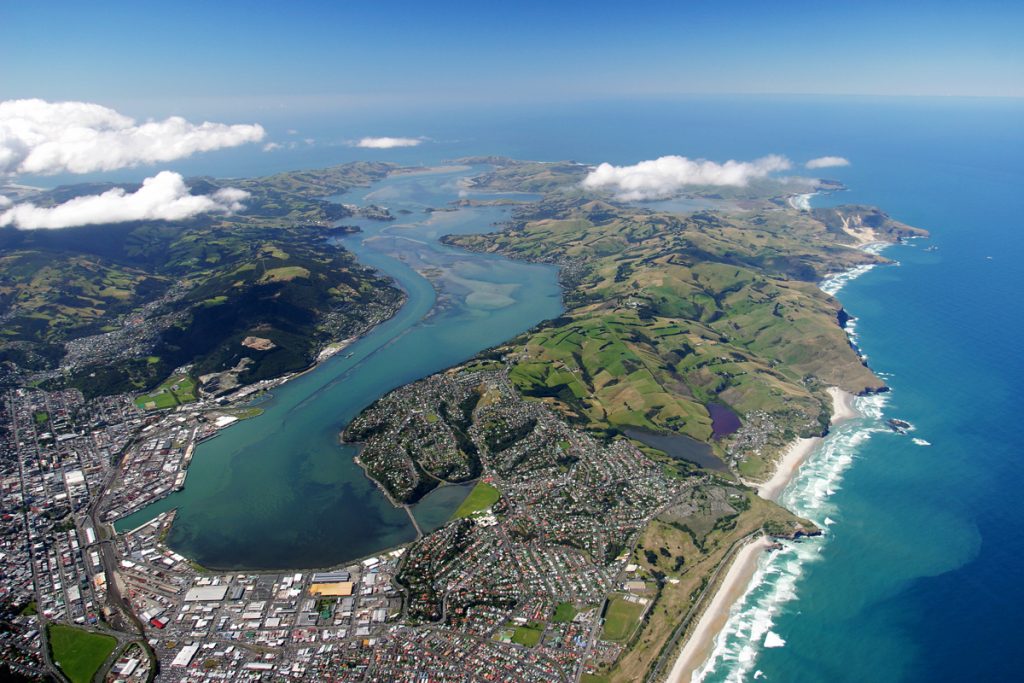
The big picture
We’ve used this aerial shot of Dunedin before, but let’s face it, it is absolutely amazing, so why not use it again? Also, it shows you just how close Dunedin is to the coastline and an array of beaches. You can’t see all of the coast line in this shot, but it gives you a pretty good indication. In Dunedin, all of our beaches are within approximately a 30 minute drive of the Central City, some as close as 10 minutes away, and that’s where we’ll start with the closest and possibly most popular local beach.
St Clair Beach
St Clair Beach and Hot Salt Water Pool is literally on the doorstep for many Dunedin residents, and only a 10 minute bus or car ride from the Otago University campus. Not only is this beach blessed with beautiful soft, white sand, the mighty Pacific Ocean that stretches its long legs out from the beach offers surfing opportunities for both beginners and those that love to wet their feet on a regular basis. If you’re coming to Dunedin and you’ve never surfed before, get some surfing lessons from the locals and see what all the fuss is about. Or if you prefer a slower pace, take a stroll along the beach and end your walk at one of the many cafes, restaurants and bars that line our most popular of beaches.
Aramoana Beach
Aramoana translates from Maori to English as ‘sea pathway’ and this beach at the mouth of the Otago harbour was probably one of the very first beaches that the European settlers to Otago would have viewed. Aramoana beach is situated next to a quiet little township that has an array of permanent homes and kiwi baches. It, like St Clair is a surfing destination, but it also attracts (as most of Dunedin’s beaches do) a range of wildlife that comes ashore and on that note it’s really important that you don’t go near any wildlife you see. Follow these guidelines on how to behave around our precious and often rare and endangered wildlife taonga – keep your distance, don’t engage, keep your dog (and children) under control and keep noise to a minimum.
Brighton Beach
20km’s South West of Dunedin you’ll find a delightful little seaside town called Brighton. Again, this beach is popular for surfers and the community around the beach very much embrace a relaxed and easy going lifestyle.
You can hire a boat from the Brighton motorcamp to paddle up and down the stream, at low tide Barney’s Island (at the South end of the beach) is a wonderful place to explore, and you’ll often find families with small children making the most of these peaceful waters.
Surf lifesaving patrols are on duty during the busy summer months and rumour has it that there is a fairly impressive little cafe out there to add to your enjoyment.
Tunnel Beach
Tunnel Beach is named because of the fact that a man-made tunnel has been carved through the rock in the 1870’s which leads to a sheltered and private beach. There are many rumours and local legends as to why John Cargill carved this remarkable walkway, including the drowning of one or more of his daughters, or the fact that he wanted to provide his daughters’ with a secluded place in order to be far from the prying eyes that Victorian settlers so avoided. Either way, it is spectacular.
https://www.youtube.com/watch?v=079qcLQkq1M
Tomahawk Beach
So this is just a taste, a mere sampling of the many and varied beaches that Dunedin has to offer, and whilst we aren’t inclined to boast we thought we would share this little clip filmed by Lloyds Bank as a finale! Tomahawk Beach, and all our Dunedin beaches, look how beautiful you are!
NB: We would like to make special mention to DunedinNZ.com for their imagery and comprehensive list and information on Dunedin beaches!
Nicky Richardson is an International Marketing Coordinator at the University of Otago. With degrees in music and marketing, she is a recent graduate of Otago herself – she loves Otago so much she ended up getting a job here!
Surfing…….just another reason to come to Otago.
We hear lots of reasons why students choose to come to study and live in our little city at the bottom of the world; our world class rankings and reputation, our friendly and welcoming atmosphere and our drop dead gorgeous environment. Choosing to come to study at the University of Otago for the surf is not a reason we’ve come across before, but it is exactly what led Celine Clausen from Norway to our doorstep.
Surfing
Celine is a passionate surfer, so her criteria when looking to study abroad was to find a world class university in a city that also provided her with incredible surfing opportunities. She found two options; Sydney or Dunedin, and she chose us, but she was completely unprepared for the reality of what she found when she arrived here.
Incredible environment
“I have been completely overwhelmed by the incredible lifestyle offered here and the natural beauty of the surrounding environment. I knew there would be good waves but I had no idea that I would be paddling in the ocean alongside seals, sea-lions and penguins!”
Proximity
The close proximity of the university and Dunedin as a whole was also something she was unaware of.
“I live super close to campus and the city centre, and I’m surrounded by students and good times. Only 15 minutes away there are beautiful beaches, nature and wildlife. Everything is so close. It’s also easy to travel around the South Island from Dunedin and explore more of what New Zealand has to offer.
Kiwis are so friendly
The friendly student culture at Otago is another factor that has made Celine’s time here an enjoyable one and she has found it easy to transition as an international student.
“Kiwis are the friendliest and most helpful people I’ve ever met and the University of Otago is no exception – I feel so welcome here. Campus is beautiful and lots of fun – all the students live super close and students account for a large part of the population of Dunedin – internationals live beside locals – I can guarantee you’ll have a blast!”
Class size
And it’s not only the natural environment that has made an impact on her, the learning environment has encouraged Celine to delve further into her learning experience.
“Having smaller classes here at Otago makes me really feel like I belong and am a part of the class – it also makes it easier and less intimidating to ask questions and really get to know the lecturers.”
And this relationship with students and lecturers alike has made Celine feel she is not just a number lost in the crowd.
“I have a really good relationship with my lecturers and I appreciate that they know my name and who I am. I feel they all want me to perform to the very best of my abilities and that they are happy to teach me and share their knowledge.”
We loved having you here Celine, and we hope that the memories and the friendships you made here will stay with you for a lifetime. Thanks for the photos, your thoughts and keep living the dream of surfing your way around the world!
If you are an international student and you would like to know more about studying at Otago, following the enquiry link below.
Nicky Richardson is an International Marketing Coordinator at the University of Otago. With degrees in music and marketing, she is a recent graduate of Otago herself – she loves Otago so much she ended up getting a job here!
Career Success – what does it mean to you?
When you make the decision to study towards a degree or diploma you are setting yourself a goal to strive towards – but what happens when you reach that goal? You have your qualification, so what next? How do you shape your career into what you want it to be?
We caught up with Yvonne Gaut from the University of Otago Career Development Centre to discuss this and she has put forward two simple and wise tips that can help you get where you want to go.
Choice
“When we make choices about our careers, we are making choices that will have implications for our work, our learning, our families and our communities”.
Tristram is one of my favourite career professors and I follow his work as he publishes and presents around the world. He investigates how various aspects of your identity, position in society and background will impact on your chance of career success.
Goal = Success
This is a good time to pause and consider what career success means to you. If you don’t know what that is, then you won’t know if you can achieve it. Once you have an idea of career success this can then be a goal. When you have a goal you are able to develop a strategy to work toward.
Take time to dream
#Tip 1. Take some time to dream, talk or draw about what career success will look like to you. It’s a useful idea to have a career journal either a paper one or within a device. Someplace that you can keep a record of your reflections and can return to whenever you feel the need.
How your career develops is not just an outcome of your choices, personality or your course. How the society in which you live is structure and how other people treat you, all have an impact.
Identify barriers
#Tip 2. Identify some of your future barriers. Considering what might hold you back from achieving your goals enables you to work on them before they leave you powerless.
Careers development works at the interface between the individual and society, between self and opportunity, as well between aspiration and realism.
Ask for help
Make use of the career service while it is freely available to you. If you are not sure what you need to ask, talking with a career development adviser can help to clarify your thoughts around your career and provide some ways to consider your future goals.
You can make a time to talk with a career development adviser through OtagoCareerHub or directly contact yvonne.gaut@otago.ac.nz
Career Development Centre – Te Pokapū Umanga | University of Otago – Te Whare Wananga o Otago
IS Building, Albany Street, PO Box 56, DUNEDIN
Being Chinese in Dunedin – not as foreign as you think.
Coming to live and study in Dunedin from China may initially seem like a total cultural and geographical shock, but Chinese people coming to Dunedin in the 21st century are following in the steps of their forefathers. Dunedin has a long history and a growing connection with China and this is the focus of today’s blog.
The Gold Rush
The first Chinese miners began arriving in the 1860’s to the Otago Goldfields. The gold rush had already hit Arrowtown when these early miners started to arrive, but by 1876 more than 4000 miners were carefully picking over previously abandoned prospects.
Early immigrants came from the Pearl River delta area in Guangdong province. Most (67%) were from Panyu county; the rest were from Siyi, Zengcheng, Dongguan and Zhongshan. These counties are located near the city of Guangzhou formerly known as Canton.
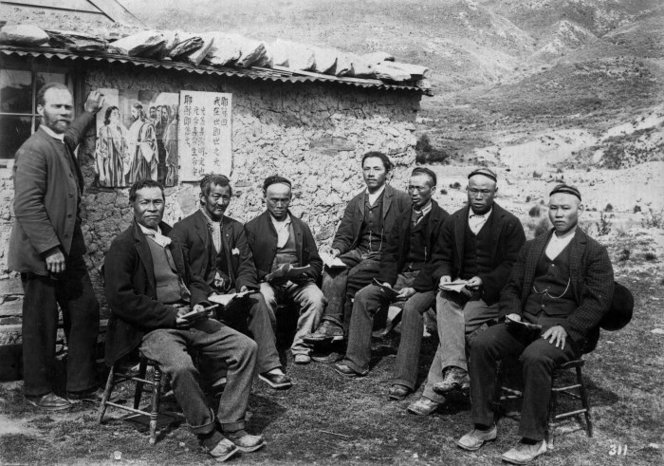
Chinese gold miners, with Mr Last in the middle, and Reverend Alexander Don on the far left, at the Kyeburn diggings circa 1900. Image courtesy of Te Puna Mātauranga o Aotearoa – National Library of New Zealand
Dunedin Chamber of Commerce
The Otago Goldfields attracted the first group of organised Chinese migrant workers. The Dunedin Chamber of Commerce (now the Otago Chamber of Commerce) recruited the workers when European miners left Otago to try their luck in the newly discovered West Coast goldfields. By late 1869, over 2,000 Chinese men had come to the land they would call the ‘New Gold Mountain.’
Many Chinese miners lived away from their European neighbours, without their families (who remained home in China) in extremely small, cramped and tiny cottages – no doubt a harsh existence during the freezing cold winters and scorching hot summers that Central Otago is renowned for. For more information on early Chinese migrants visit Te Ara – The Encyclopedia of New Zealand.
A fresh start
Immigration rules in New Zealand became more liberal in 1987, and new waves of Chinese migrants once again came to ‘New Gold Mountain,’ as their ancestors named New Zealand. Chinese migrants brought diverse skills and languages, and rich culture and traditions such as the lion dance and the lantern festival.
When the goldfields had been exhausted, many Chinese miners came to Dunedin to establish and run some of Otago’s early businesses. Their ancestors still call Dunedin home today.
A tale of two cities
In part due to the strong influence of Chinese in Otago’s history, the involvement of the local Chinese population and the wish to establish trusted business and trade opportunities Dunedin became sister city to Shanghai in October 1994.
The relationship is a driver behind Project Shanghai, a partnership of Dunedin businesses, educational institutions, the Otago Chamber of Commerce and the Dunedin City Council which aims to develop a broad range of links between the two cities.
A Dunedin Shanghai Association formed shortly after the relationship was formalised. The Association plays a key role in introducing and facilitating business, cultural, education and sports links between Dunedin groups and their Shanghai counterparts. It also hosts and facilitates a wide range of visitors and delegations from Shanghai. This role is reciprocated by the City of Shanghai in terms of visits to Shanghai by Dunedin delegations.
The Dunedin Chinese Garden
Once the sister city bonds had been formally recognised, talk began in 1998 of creating an authentic, traditional Chinese garden in Dunedin to recognise the contributions of the first Chinese people who came to Otago during the 1860’s and contributed so much both in commerce and culture over the years.
The Dunedin Chinese Garden’s design and construction was supervised and influenced by an architect from the Shanghai Construction and Decoration Company and the Shanghai Museum.
The Garden was pre-fabricated and assembled in Shanghai on a site identical in size and shape to that in Dunedin, then dismantled and transported here where it was reconstructed by artisans and supervisors from Shanghai.
The Dunedin Chinese Garden was blessed in June 2008, in the presence of Prime Minister Helen Clark and Chinese ambassador Zhang Yuanyuan and opened to the public on 8 June 2008. Prime Minister Clark returned to officially open the garden in September 2008.
Studying at the University of Otago
So, whilst the connections between China and Dunedin are historical and current, I am not Chinese – therefore I cannot give my perception on what it is like to live and study in Dunedin as a Chinese student at the University of Otago.
We caught up with Mike (Huang) Junjing who is here studying for a Bachelor of Physiotherapy (BPhty) to get his perspective as a Chinese student studying at the University of Otago and this video tells his story.
Take it away Mike…….
NB: The introduction is spoken in Chinese with Chinese subtitles, but the rest of the video is spoken in English with Chinese subtitles.
Nicky Richardson is an International Marketing Coordinator at the University of Otago. With degrees in music and marketing, she is a recent graduate of Otago herself – she loves Otago so much she ended up getting a job here!
5 things you might not know about the University of Otago….
As we rapidly approach 2019 and the University of Otago’s 150th birthday celebrations, it seems like a good opportunity to delve into the archives to find out some not so commonly known pieces of information about the university. I have asked around and here are 5 hidden gems that you might not know about the University of Otago.
Gargoyles or Grotesques?
Perched high above the Archway (which was once the formal entrance to the University) are a series of grotesques, each representing the various branches of learning available at the university at the time. They have been named gargoyles but the distinction lies between the fact that a gargoyle functions as a water spout to divert rain from the buildings, whereas a grotesque is purely decorative and involves either fanciful animal and human forms often distorted to be ugly and absurd.
Rumour has it that the grotesques were modelled on academic staff of the time……but that has never been confirmed. The man responsible for these unique little design elements was Edmund Anscombe (1874-1948), the university’s architect from around 1909 to 1929. While Fletcher Brothers won the tender to construct the Archway with a price of £10,292, the stonemason who carved the grotesques is unknown.
Otago’s oldest building
When you look at our gorgeous campus it is easy to assume that the oldest buildings are the old stone buildings in the centre of campus, but as the university expanded over time it began to acquire neighbouring properties which ranged from tiny cottages to larger homes.
Some were demolished, but some still survive, including what is widely deemed to hold the title of ‘oldest building on campus.’ Mellor House, one of the old Union Street houses which is now home to the Department of Psychology was originally built in 1862 for Thomas Calcutt, a printer who migrated from England to Otago in 1858.
Cry me a river……of tears
These beautiful black gates were originally the main entrance to the campus, as the entire campus was once contained within the ‘Quad’ which you can see immediately beyond the archway.
This stone corridor houses display boxes on the left which now contain information about events around the university, but their original purpose was for the public display of exam results. Hundreds would gather to view their results and many a tear was shed when the marks were not positive, hence the archway being coined ‘The Corridor of Tears’ or the ‘Tunnel of Tears.’
The archway links the Allen Hall building (completed 1914, it was originally the Students’ Union) to the former School of Mines building (completed 1909, which is currently home to the International Office and where I am writing this blog). The entire group of buildings was designed by Edmund Anscombe the architect for the majority of the University buildings from 1909 to 1927.
The original site of the Dunedin Botanic Gardens
The Water of Leith which runs through the university campus is not always this tranquil, and this was certainly the case when in February 1868 floods washed away bridges, and about an acre of gardens – at this point in history this site was home to the Dunedin Botanic Garden. This saw the Botanic Garden moved further north to their current site, and the university was able to purchase the land and develop it in the 1870’s. Some of the trees in front of the clocktower are indeed older than the buildings themselves as they are a reminder of the original inhabitants of this site.
Students have always pushed the boundaries
Each generation that passes seems to muse on the fact that the younger generations are less respectful, more verbal and opinionated and more willing to push the boundaries, but it appears that students, or indeed the younger generation have always held this inclination.
The image above was taken from the desktops of the oldest lecture theatres on campus – in both Geology and the clocktower. As you can see from the dates, some of this is very old indeed, with J.H. (John Harpur) Moir making his mark in 1886-1887. Mr Harpur graduated with a B.A in 1890 and became headmaster of Dunedin’s Normal School.
The full installation, complete with plaque now features on the south wall of the council chambers in the clocktower building, and it really is a remarkable and historical sight to see, some of the graffiti is embedded so deeply into the wood, it must have taken hours!
Nicky Richardson is an International Marketing Coordinator at the University of Otago. With degrees in music and marketing, she is a recent graduate of Otago herself – she loves Otago so much she ended up getting a job here!
Fit in, or stand out? A Muslim perspective on life at Otago University
How do students that choose to live their lives in the Muslim faith feel when they come to the University of Otago? Do they stand out from the crowd? Are their beliefs and practices respected and catered for? Well, that is a question I cannot answer as I am not a Muslim. But I have met Muslim students working here and I have an increasing interest in the way that they choose to lead their lives. Today we launch our international video taken from the perspective of a Muslim student studying at Otago – so, what is it like?
My day is just like yours
These quotes were taken from anonymous Muslim writers in an article titled ‘What is it like to be a Muslim Student at Otago University’ and published by Critic in August 2016:
“As a Muslim student at Otago, my day is just like yours. This is because not all Muslims come in the same packaging. There are over a billion of us worldwide and each is an individual. Islam is the religion I was born into and have grown up with. For me, it is not something I consciously think about but the values that come with being Muslim are now so deeply ingrained within my identity that they are second nature. It is something I carry with me in my interaction with other students, with the University itself and the general public.”
Diverse staff and students
I think that the point made that “not all Muslims come in the same packaging” is something we non-Muslims need to remember. Don’t judge a book by its cover, and especially don’t judge a way of life that you have no understanding of. Reading through the articles written and the conversations had, it is clear that Muslim students predominantly feel welcomed and accepted.
“If anything, I’m overwhelmed with how accepting and open-minded all of the staff and students are here. One of the first things that I noticed when I moved here was how diverse the student body appeared to be and how nobody seemed to care about what anyone else was doing. This is one of my favourite things about this place.”
No barriers to practising beliefs
The University has two prayer rooms with one space exclusively for the Islamic community; it faces Mecca and is split into two rooms by a curtain. This is to adhere to Islamic rules on prayer with the opposite gender. Halal Food is readily available in local supermarkets and there are Halal restaurants in Dunedin. And if you’re wondering about connecting with other Muslim students when you come to Otago there is a range of established groups like the OMSA (Otago Malaysian Students’ Association), the Otago Muslim Association, and the MUSA (University of Otago Muslim University Students’ Association).
Studying at Otago – a Muslim Perspective
As for the question ‘fit in, or stand out?’ I think you’ll find that at Otago the choice is yours…..Muslim, or not.
But once again, as eluded to in the beginning of this blog post, I am not a Muslim, so therefore I cannot tell you what life as a Muslim at Otago is like.
But this lovely, smart and inspiring young woman – Arina Aizal can, and she does so, so beautifully in our latest video……….take it away Arina……..
Nicky Richardson is an International Marketing Coordinator at the University of Otago. With degrees in music and marketing, she is a recent graduate of Otago herself – she loves Otago so much she ended up getting a job here!
Employability is the new ‘it’ word, what does it really mean?
There is so much jargon in the business world…….buzz words, acronyms that seem to be more confusing to people than helpful half the time… and confusion over what a word or phrase actually means………but we are not afraid to ask the questions here!
We decided to talk to Melissa Fuller about the word ’employability’ – here is her take on this fashionable word.
Soft skills
Employability is the new ‘it’ word, but in simple terms for a candidate looking for a role – it is your soft skills.
So what are soft skills? They are skills outside of your qualification. Skills such as the ability to form relationships, create a customer experience, effectively communicate with others and problem solving. These skills are hard to teach and some people naturally have them.
No prior work experience is irrelevant
The best way to gain those important soft skills is to volunteer, find part time work or summer work. No prior work experience is irrelevant. In any work experience you have developed skills such as listening, following instructions and communicating with a diverse range of people.
Soft skills = transferable skills
These skills are transferable into any role you wish. An example: if you work in a busy restaurant while studying finance, you are able to show your ability to work and listen under pressure. Something that may be important in a finance based role. You can identify what skills outside of your qualification are important by reading the job description or talking to others in the industry.
Sell your particular package of skills
It is important to remember that Dunedin, as well as New Zealand, is built on small to medium size businesses with employee numbers fewer than 30. Investing in employees is a big decision for those employers and an expensive undertaking. ‘Selling you‘ as a package of skills to a potential employer will enhance your chances of becoming employed and help the business.
Learn, grow and develop yourself
Look outside your qualification and create opportunities to learn new skills. Unicrew is a great place to go to try out volunteering. For more information on how to find work while studying in Dunedin, follow us on Facebook. www.facebook.com/getworkready or go to www.getworkready.co.nz for more information.
Melissa Fuller is the energetic, enthusiastic program co-ordinator at ‘Work Ready,’ and she is passionate about helping international students adapt to life in New Zealand and move into employment prior to graduation.

